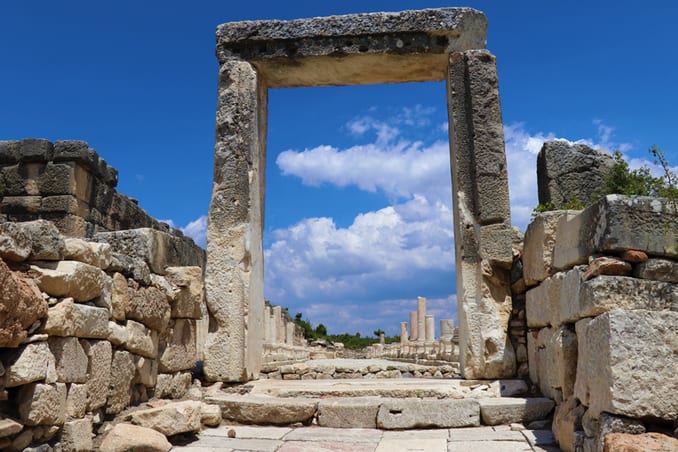Kibyra Ancient City in Turkey

Where is Kibyra Ancient City Located?
Kibyra is located in the Golhisar district of Burdur, 1.350 metres above sea level, amidst juniper and cedar forests. Archaeological excavations and excavations began in 2006 in the city, which dates back 2,300 years.
According to archaeological sources, Kibyra contains the longest frieze (decorative line on the walls) of a military unit of 30,000 infantry soldiers and more than 2,000 knights.

Historic Military City
Kibyra, a Turkish city with the longest decorative line on its walls, features sculptures of ancient history wrestlers in Anatolia.
The ancient city of Kibyra, in southwestern Turkey, is an attraction for tourists and lovers who like to explore history, thanks to its rare archaeological and mosaic artefacts, which date back to ancient times.

Capital and Industrial Centre
Kibyra features the famous mosaic painting of Medusa, one of the most prominent figures of Greek mythology, Roman baths and underground rooms.
The city has a playground that accommodates about 10,000 people, built in Roman and Byzantine style.

Sukru Ozudogru, director of Kibyra city and a faculty member in the Department of Antiquities at the Mehmet Akif Ersoy University in Turkey, said, "the excavations show that the city was a capital and a huge industrial centre, as well as having a large economy and army."
In a briefing to Anadolu Agency, he recalled that Kibyra was the only city with which the Roman Empire concluded an alliance and friendship agreement in the Anatolian region, demonstrating its strength and bond with the empire.
Ozudogru noted that the old city was not built indiscriminately but according to a specific plan by pre-equipping its infrastructure and identifying its main streets and alleys.
He explained that large parts of the city still exist, particularly its huge stadium, where there is no stadium of this size from ancient times in Anatolia, and still maintains its existence.
According to Ozudogru, its large market Agoras, the 9,000-capacity theatre, the Odeon concert platform, another winter theatre, the judiciary building, and parliament are among the monuments.
On the features of the Old City, he said, "excavations show that the city was a hub for industry, agriculture, animal husbandry, especially horses, as well as ironwork."
He confirmed that four languages were popular in the city, most notably the 'Lydian', which remained in use even 500 years after the demise of the Lydia Kingdom.

The legendary Painting of Medusa
Concerning the mosaic "Medusa", the most prominent landmark of the Ancient City, Ozudogru said, "it was discovered during excavations that began in 2009 and ended in 2012," and explained that the city and theatre gained international fame after the discovery of the mosaic painting Medusa.
He also stated that the snake-haired Medusa, which adorns the orchestra section of the Odeon Theatre, is particularly important in Greek mythology.
"The theatre that houses the mosaic floor has been hit by fires, earthquakes, and disasters in ancient times, yet it is considered one of the best-preserved ancient buildings in Turkey," he added.

Kibyra to Be Included on the World Heritage List.
Efforts are continuing in the Old City to join the UNESCO World Heritage List, having joined its provisional list in 2016.
The Director of the Old City expressed confidence that Kibyra would soon join the Permanent World Heritage List as it had many of the criteria required by UNESCO.

Read more on Safaraq:
Antalya’s Most Famous Tourist Places
Edited by Safaraq Tourism
Did you like our topic? You can share it with your friends
Featured tourist services
We offer top tourist services with the highest standards of quality and luxury with 24/7 follow-up.

Flight reservations

Tourist programs

Hotels and Resorts

Car Reservation

Group Tours

VIP Services
Subscribe To Our Newsletter
Find More About The Latest Safaraq






















 Home
Home




